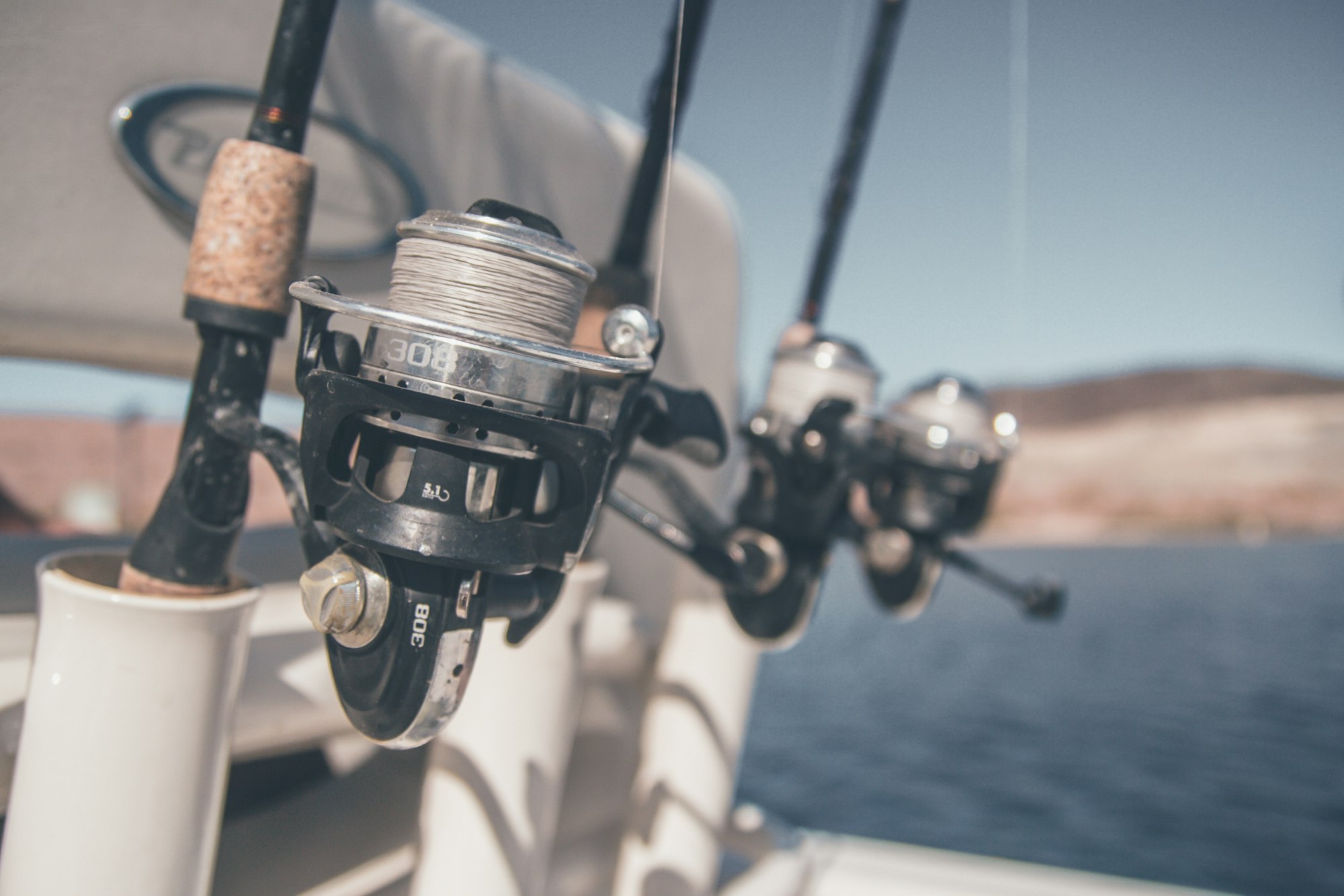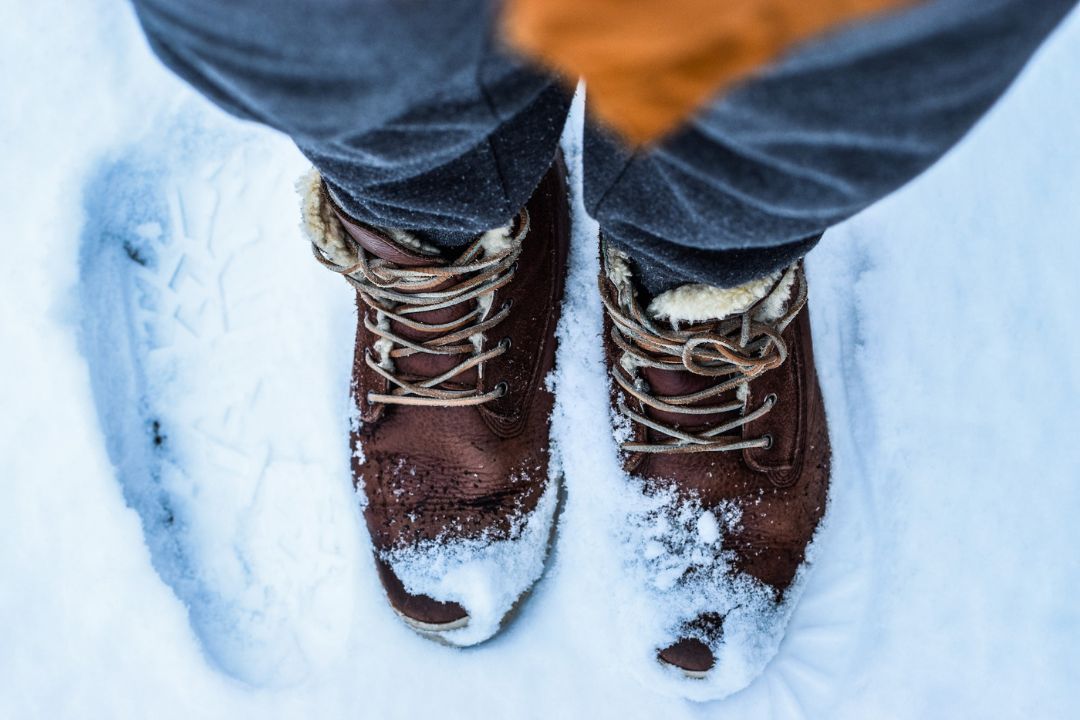Finally, a Guide for the Absolute Beginners: How to Put Fishing Line on a Reel Without Embarrassing Yourself
Learn the ins and outs of putting a fishing line on a reel with our comprehensive guide, from preparing the reel and line to adjusting the drag and tension, storing the line, and properly disposing of the used line. Plus, find the top ice fishing lines on the market to make your next trip a success.
Are you an absolute beginner when it comes to fishing? Have you ever felt overwhelmed thinking about setting up your fishing tackle and attaching a line to the reel?
Don't worry, we've all been there! But with the right tools and knowledge, putting a fishing line on a reel can be easy and hassle-free.
In this article, we'll provide you with an easy-to-follow guide that will help you put your fishing line on a reel without any embarrassing moments.
So put away your apprehension and read on for an easy-to-follow breakdown of how to properly put fishing lines on your reels - without embarrassing yourself!
Selecting the Right Lines
Putting a fishing line on a reel is selecting the type of line that best suits your purpose. To do this, you should consider things such as the target species, type of water, and other environmental factors that might influence your choice of line.
For instance, if you're planning on going saltwater fishing then braided lines are usually preferred as they can better withstand the abrasive environment. Monofilament lines are ideal for freshwater fishing as they are more flexible and less expensive than braided lines, while Fluorocarbon lines are a better choice as ice fishing lines.
Preparing the Reel and Line

When it comes to putting fishing lines on a reel, proper preparation is key. Before you begin, it's important to make sure that the reel is clean and in good working condition. This will help ensure that the line is loaded properly and that you don't encounter any issues while fishing.
Spool the fishing line onto the reel
The first step in preparing the reel and line is to spool the new line onto the reel. This can be done by using a line spooler or by hand. When spooling the line, it's important to make sure that it is loaded evenly and that there are no twists or tangles. This will help prevent issues such as line breakage or poor casting.
Recommended knot types
Next, you'll want to attach the new line to the reel using a knot. The type of knot that you use will depend on the type of reel that you have and the type of fishing that you plan to do. Some common knots include the arbor knot, the uni knot, and the double uni knot.
An easy, popular and reliable choice is the "Improved Clinch Knot." This knot is easy to tie and provides a strong, secure connection between the line and reel. It's important to practice tying these knots before you go out fishing to make sure that you can do it quickly and easily.
Other Considerations
Finally, you'll want to adjust the drag and tension on the reel. The drag is the amount of resistance that the reel provides when the fish is pulling on the line. The tension is the amount of force required to pull the line from the reel. Setting the drag and tension correctly will help you to land the fish safely and to prevent the line from breaking.
Putting the Line on the Reel
Once you have everything prepared, putting a line onto your reel is the next step. The process for putting the line on a reel will vary slightly depending on the type of reel you are using.
Spool the fishing line onto the reel
For spin casting reels, thread the line through the guide located on the front of the reel, and then tie the line to the reel's arbor using a knot of your choice. Finally, press the button to release the line onto the spool.
- For baitcasting reels, thread the line through the guides on the fishing rod and tie it to the reel's spool using a knot. Then, adjust the tension on the reel to suit your needs.
- For spinning reels, tie the line to the reel's spool, and then thread the line through the guides on the rod. Finally, turn the handle of the spinning reel to wind the line onto the spool.
Tips for Adjusting the Drag and Tension on the Reel
Adjusting the drag and tension on your reel is an essential part of ensuring a successful fishing experience.
The drag is the amount of resistance the fish feels when it pulls on the line. Setting it correctly will allow the fish to be hooked and reeled in smoothly without breaking the line.
To set the drag, first, tie a small weight or a rubber band to the end of the line. Next, pull the line with your hand and adjust the drag knob or lever until the weight or rubber band just starts to move. This is the ideal setting for the drag.
Tension on the reel, on the other hand, refers to the pressure applied to the spool during casting. To set the tension, cast the line and then adjust the tension knob or lever until the spool stops spinning at the right moment. This will allow the line to be released smoothly and accurately.
It's important to note that getting the right drag and tension setting may take some practice but once you find it, casting and reeling in will be effortless. This will also depend on your techniques, location, and the species you are after.
For example, fly fishing reels are designed to have a relatively light drag, on the other hand, bass fishing reels are designed to have a heavier drag. By adjusting the drag and tension correctly, you can make sure that your fishing experience will be smooth, efficient, and successful.
Troubleshooting Common Mistakes
When putting the fishing line on a reel, it's not uncommon to encounter some issues. Here are some common mistakes and how to fix them:
- Line twists: This happens when the line gets twisted during the spooling process. To fix a line twist from happening, stop spooling the line and gently untwist the line by hand. Also, make sure to keep the line tight while spooling it to prevent this from happening again.
- Overfilling the reel: When too much line is added to the reel, it can cause the line to break under pressure. To fix this, remove some of the lines from the reel and make sure to follow the reel's recommended line capacity.
- Underfilling the reel: This can lead to tangles and poor casting. To fix this, make sure to fill the reel with enough lines to reach the maximum amount recommended by the manufacturer.
- Incorrect knot: Using the wrong knot can lead to the line coming off the reel when casting or reeling in a fish. To fix this, make sure to use the recommended knot for your reel type.
- Line tangles: Tangles can happen when the line is not spooled onto the reel correctly. To fix this, remove the line from the reel and re-spool it, making sure to keep it tight and avoid any twists or kinks.
- Incorrect drag setting: The drag is the resistance the fish feels when it pulls on the line. Setting it incorrectly can cause the line to break or the fish to get away. To fix this, set the drag correctly by using a small weight or rubber band as described in the previous sections.
- Damaged fishing line: This can happen if the line is not stored properly or if it is exposed to UV rays or heat. To fix this, make sure to properly store the fishing line on the reel when not in use and keep it away from direct sunlight and heat sources.
By being aware of these common mistakes, you can easily troubleshoot and fix them and have a more enjoyable and successful fishing experience.
Take a look at the video to make sure there are no line twists:
How to Put a Line on Ice Fishing Reel
Putting a line on an ice fishing reel is similar to putting lines on normal fishing reels, but there are a few key differences to keep in mind.
- First, it's important to use a thinner, more flexible line for ice fishing. This is because the water is colder and a line can become brittle and snap if it's too thick.
- Before putting the line on the reel, it's also important to make sure that the reel is adjusted for ice fishing. This typically involves adjusting the drag to a lower setting, as the fish are likely to be smaller in size and require less resistance.
- When putting the line on the reel, it's important to be mindful of the number of lines you are using. Ice fishing requires shorter casts, so you'll want to use less line than you would for normal fishing.
- Also, it's important to use a knot that can withstand low temperatures, such as the "Palomar knot" which is known for its strength and reliability in cold conditions.
- Finally, make sure to properly store the line on the reel when not in use. Keep it away from direct sunlight and heat sources, as the low temperatures can cause the line to become brittle and snap.
How to Properly Store the Fishing Line on the Reel When Not in Use
Properly storing the fishing line on the reel when not in use is important to keep it from getting tangled or damaged. This will ensure that it will provide you with a more enjoyable and successful fishing experience and is ready to use when you're ready to hit the water.
- The first step is to make sure that the line is dry. If it's wet, gently wipe it down with a towel or cloth to remove any excess water.
- Next, loosen the drag on the reel and let out any extra line so that it's not under tension. This will prevent any unwanted kinks or twists from forming in the line.
- When you're ready to store your reel, make sure that it is in a dry place, away from direct sunlight and any heat sources. This will prevent the line from getting damaged by UV rays or heat.
- You can also consider filling the spool with a line conditioner or anti-rust solution, which will protect the line from rust, corrosion, and moisture.
- Finally, it's a good idea to store your reel in a protective case or cover. This will keep it clean and protected from scratches, dust, and other potential damage.
How often should you re-spool your fishing line?

Re-spooling your fishing line is a crucial step to keeping your fishing gear in good condition. It should be done at least once a year, or more often if the old line shows signs of damage such as fraying or wear and tear.
Doing so will make sure that the line is strong, reliable, and less likely to fail when you're out on the water. Additionally, using a new reel line can dramatically improve your casting accuracy and distance while giving you greater control when reeling in your catch.
The type of fishing you do, how frequently you use the equipment, and the conditions that you fish in can also affect the need for re-spooling; be sure to check for signs of damage regularly so that you're ready to re-spool as needed.
Also, check out our article on the Best Prebiotic Soda
Testing Your Fishing Lines Before Heading Out
Testing your fishing line before going out fishing is an important step in ensuring a successful and enjoyable experience. Not only it will help you to detect any damage or wear on the line, but it will also give you a sense of the line's strength and sensitivity.
- One way to test your line is by pulling it taut and giving it a few hard tugs. This will help you to identify any weak or frayed spots. You can also test the knot by giving it a tug, to make sure it's secure.
- Another way to test your line is by casting it and observing the way it's releasing from the spool, and how it's performing in the air. If the line is not coming off the spool smoothly, or if it's making loops or tangles, it's a sign that the reel needs to be adjusted or the line needs to be re-spooled.
- You can also test your line by reeling it in and feeling for any knots or tangles. If you notice any, you may need to re-tie the knot or re-spool the line.
Proper disposal of used fishing line
Properly disposing of used fishing lines is an important step in protecting the environment. Old lines, if not disposed of properly, can be harmful to wildlife, and marine life, and can cause damage to the ecosystem.
When disposing of used fishing lines, it's important to avoid throwing them into the water or on the ground. Instead, it should be collected and properly disposed of in a designated fishing line recycling bin or program. Many fishing tackle shops, marinas, and other locations have these bins for the purpose of recycling fishing lines.
Another way to dispose of used fishing lines is to cut them into small pieces before disposing of them. This will prevent it from getting tangled and causing harm to wildlife or marine life.
It's also important to educate others about the importance of properly disposing of fishing lines and to encourage them to do the same. By properly disposing of used fishing lines, we can help to protect the environment and the creatures that live in it.
Final Thoughts
Putting a fishing line on a reel is an essential step in ensuring a successful and enjoyable fishing experience. By following the tips in this article, you'll be sure to spool your fishing line properly onto your reel and store it correctly when not in use.
And if you're an ice fishing enthusiast, don't forget to check out our article on the best ice fishing lines. We've researched and tested various lines to bring you a comprehensive guide on the top options available on the market. Make sure to use the right line for the conditions and species you're targeting, and you'll be on your way to a successful and memorable ice fishing trip.

Also, check out some of our other articles:





